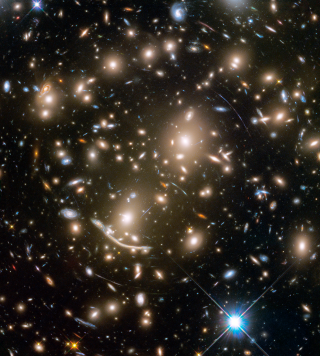Bibcode
Díaz-García, L. A.; Cenarro, A. J.; López-Sanjuan, C.; Ferreras, I.; Fernández-Soto, A.; González Delgado, R. M.; Márquez, I.; Masegosa, J.; San Roman, I.; Viironen, K.; Bonoli, S.; Cerviño, M.; Moles, M.; Cristóbal-Hornillos, D.; Alfaro, E.; Aparicio-Villegas, T.; Benítez, N.; Broadhurst, T.; Cabrera-Caño, J.; Castander, F. J.; Cepa, J.; Husillos, C.; Infante, L.; Aguerri, J. A. L.; Martínez, V. J.; Molino, A.; del Olmo, A.; Perea, J.; Prada, F.; Quintana, J. M.
Referencia bibliográfica
Astronomy and Astrophysics
Fecha de publicación:
11
2019
Revista
Número de citas
15
Número de citas referidas
13
Descripción
Aims: We aim at constraining the stellar population properties of quiescent galaxies. These properties reveal how these galaxies evolved and assembled since z ̃ 1 up to the present time.
Methods: Combining the ALHAMBRA multi-filter photo-spectra with the fitting code for spectral energy distribution MUFFIT (MUlti-Filter FITting), we built a complete catalogue of quiescent galaxies via the dust-corrected stellar mass vs. colour diagram. This catalogue includes stellar population properties, such as age, metallicity, extinction, stellar mass, and photometric redshift, retrieved from the analysis of composited populations based on two independent sets of simple stellar population (SSP) models. We developed and applied a novel methodology to provide, for the first time, the analytic probability distribution functions (PDFs) of mass-weighted age, metallicity, and extinction of quiescent galaxies as a function of redshift and stellar mass. We adopted different star formation histories to discard potential systematics in the analysis.
Results: The number density of quiescent galaxies is found to increase since z ̃ 1, with a more substantial variation at lower stellar mass. Quiescent galaxies feature extinction AV < 0.6, with median values in the range AV = 0.15-0.3. At increasing stellar mass, quiescent galaxies are older and more metal rich since z ̃ 1. A detailed analysis of the PDFs reveals that the evolution of quiescent galaxies is not compatible with passive evolution and a slight decrease of 0.1-0.2 dex is hinted at median metallicity. The intrinsic dispersion of the age and metallicity PDFs show a dependence on stellar mass and/or redshift. These results are consistent with both sets of SSP models and assumptions of alternative star formation histories explored. Consequently, the quiescent population must undergo an evolutive pathway including mergers and/or remnants of star formation to reconcile the observed trends, where the "progenitor" bias should also be taken into account.
Based on observations collected at the Centro Astronómico Hispano Alemán (CAHA) at Calar Alto, operated jointly by the Max-Planck Institut für Astronomie and the Instituto de Astrofísica de Andalucía (CSIC).
Proyectos relacionados

Evolución de Galaxias en Cúmulos
Las estructuras en el Universo, a todas las escalas de masa, se han formado de una forma jerárquica y principalmente producidas por fusiones de galaxias. Sin embargo, esta formación jerárquica de las galaxias está modulada por el entorno en el cual se crean y evolucionan. Mientras que las galaxias de campo presentan una evolución pasiva, los
Jairo
Méndez Abreu

Huellas de la Formación de las Galaxias: Poblaciones estelares, Dinámica y Morfología
Bienvenida a la página web del g rupo de investigación Traces of Galaxy Formation. Somos un grupo de investigación amplio, diverso y muy activo cuyo objetivo principal es entender la formación de galaxias en el Universo de una manera lo más completa posible. Con el estudio detellado de las poblaciones estelares como bandera, estamos constantemente
Anna
Ferré Mateu

Evolución de Galaxias
El estudio de la evolución de las galaxias es un tema crucial de la Astronomía Extragaláctica moderna. Permite vincular las galaxias locales con las primeras que existieron en el universo. Pero para poder abordarlo es preciso obtener censos estadísticamente significativos de galaxias de distintas luminosidades, a distintas distancias
Jorge
Cepa Nogue